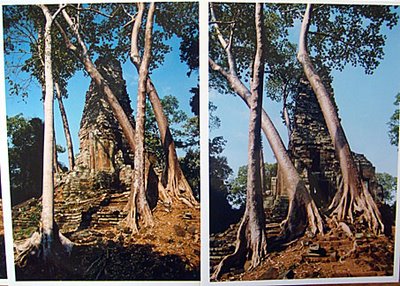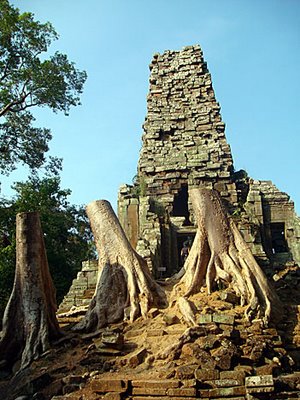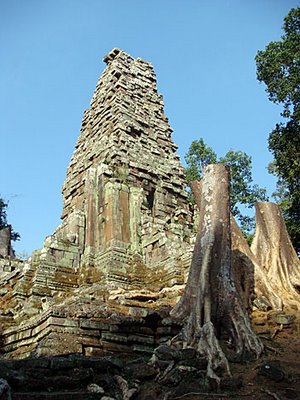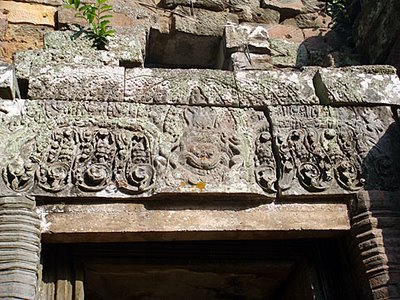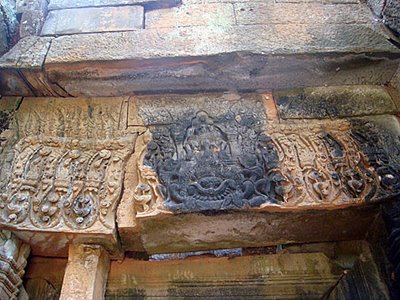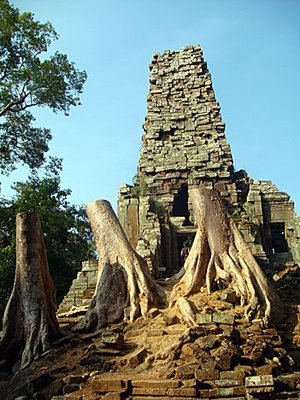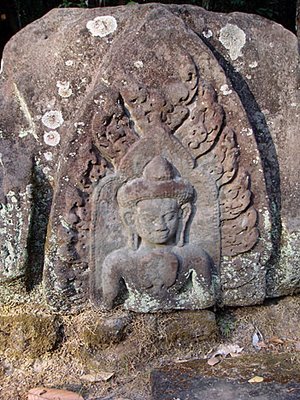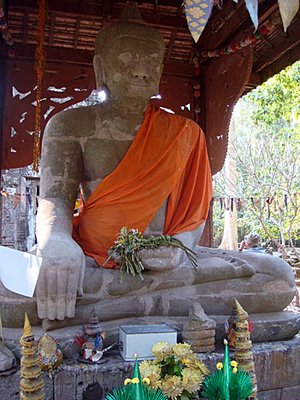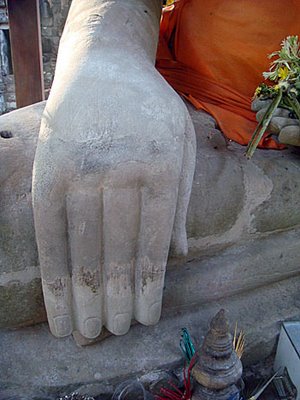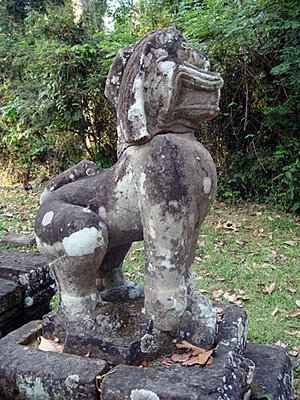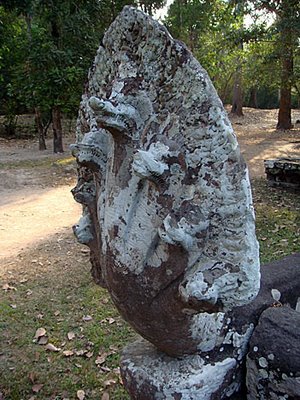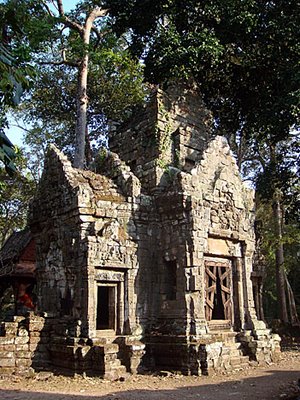 The east gopura of Preah Palilay bathed in sunshine
The east gopura of Preah Palilay bathed in sunshine
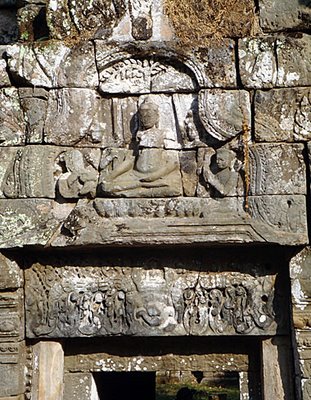 Above a worn lintel, this western-facing pediment shows Buddha sat on a plinth under a tree with two acolytes holding parasols
Above a worn lintel, this western-facing pediment shows Buddha sat on a plinth under a tree with two acolytes holding parasolsAngkor scholars have disagreed on the date of construction of the temple of
Preah Palilay. Henri Marchal assigned it to the 12th century but without a stele or epigraphic reference, other experts have put a late 13th, early 14th century date on it, mainly because the Buddhist images have not be defaced, as they have been elsewhere. This usually took place in the early 13th century iconoclastic reaction against images of Buddha relating to Jayavarman VII, though the more remote temples like Banteay Chhmar escaped this destruction. So the pediments and lintels of Preah Palilay, particularly on the eastern gopura, have not been altered though in my view, they are not as good as some experts rate them. But hey, what do I know. I have commented on the carvings under each of the photos, and as always thank Vittorio Roveda for his help in understanding the main themes that we see today. Without him we'd be pissing in the wind. Can I say that? I just have.
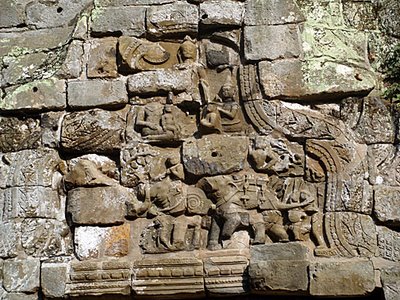 This three tier pediment shows Buddha at the top, two ladies offering their children just below and at the bottom, three elephants passing through the forest. This pediment is on the western face over the main door.
This three tier pediment shows Buddha at the top, two ladies offering their children just below and at the bottom, three elephants passing through the forest. This pediment is on the western face over the main door.
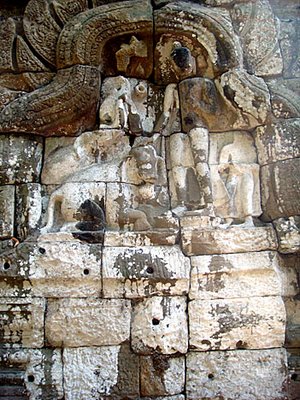 Though difficult to make out, this pediment on the northern side shows Buddha subduing the mad elephant Nalagiri, by placing is hand on the kneeling elephant's head
Though difficult to make out, this pediment on the northern side shows Buddha subduing the mad elephant Nalagiri, by placing is hand on the kneeling elephant's head
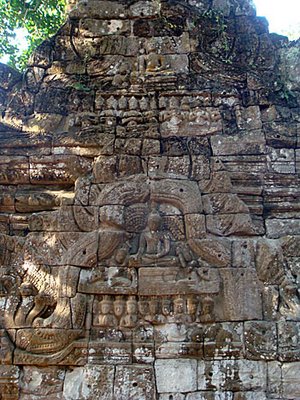 This double pediment, on the southern face of the gopura, shows Buddha in meditation under the boddhi tree, with rows of worshippers in the lower register
This double pediment, on the southern face of the gopura, shows Buddha in meditation under the boddhi tree, with rows of worshippers in the lower register
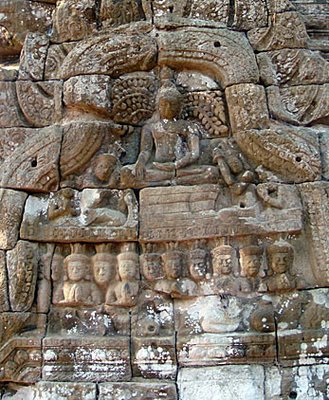 On the south side, Buddha on a plinth, in meditation with 10 worshippers below him
On the south side, Buddha on a plinth, in meditation with 10 worshippers below him
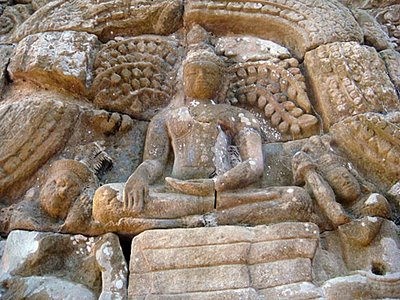 Up close - the meditating Buddha under the boddhi tree with acolytes in attendance
Up close - the meditating Buddha under the boddhi tree with acolytes in attendance
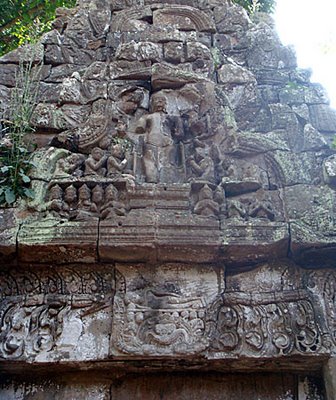 In the lintel below the pediment, Buddha is dying and lying on his left side. In the upper pediment, a standing Buddha is surrounded by acolytes and two rows of worshippers below. These are on the eastern face of the gopura, above the main door.
In the lintel below the pediment, Buddha is dying and lying on his left side. In the upper pediment, a standing Buddha is surrounded by acolytes and two rows of worshippers below. These are on the eastern face of the gopura, above the main door.
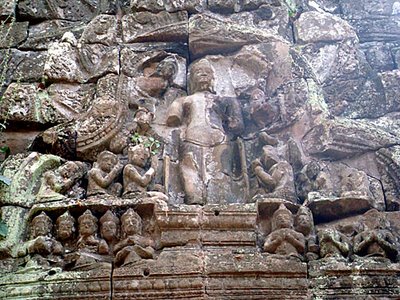 A closer look at the standing Buddha, on a plinth, and his worshippers
A closer look at the standing Buddha, on a plinth, and his worshippers
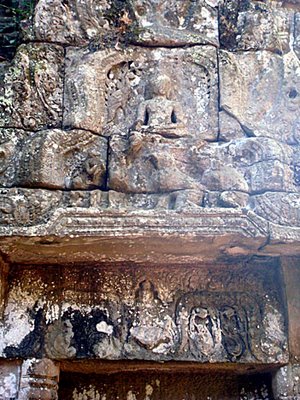 Finally, above a very worn lintel, the pediment shows Buddha receiving offerings from the animals of the Parilyyaka forest (from where Palilay derives) including an elephant, monkey and peacock. To be found on the east-facing side of the Preah Palilay gopura.
Finally, above a very worn lintel, the pediment shows Buddha receiving offerings from the animals of the Parilyyaka forest (from where Palilay derives) including an elephant, monkey and peacock. To be found on the east-facing side of the Preah Palilay gopura.Labels: Angkor Thom, Preah Palilay
